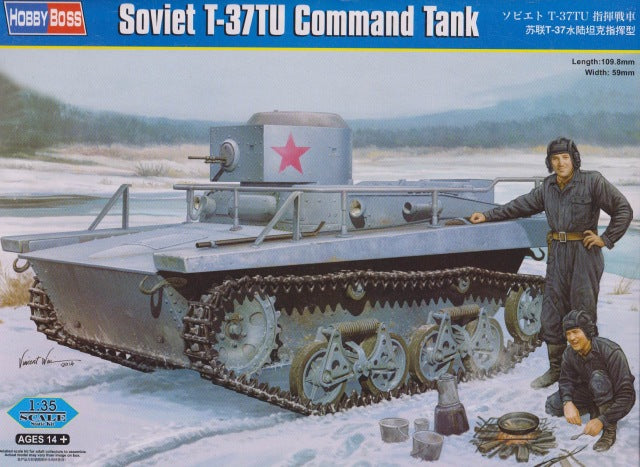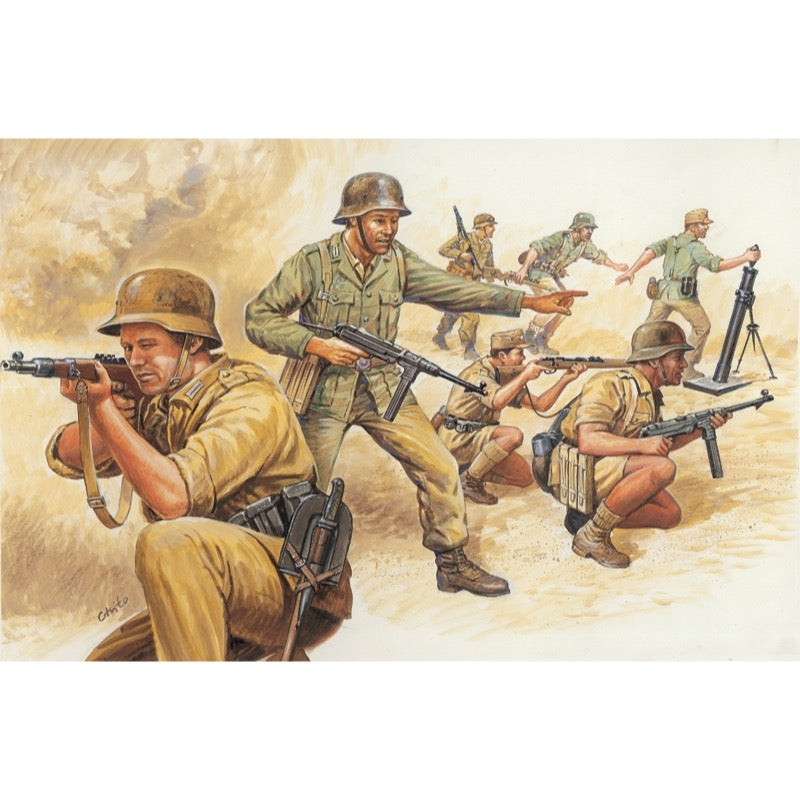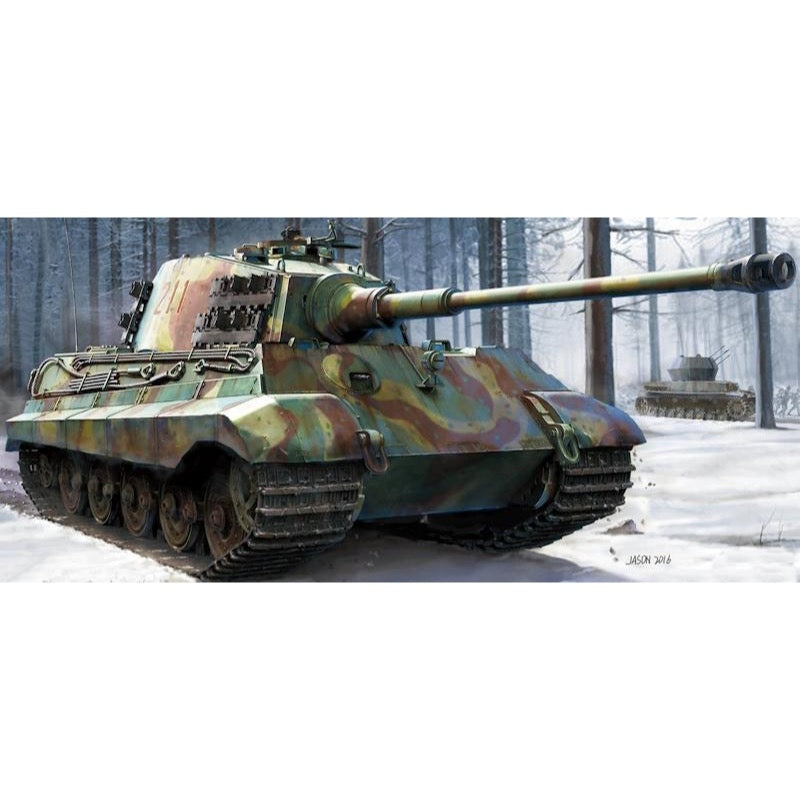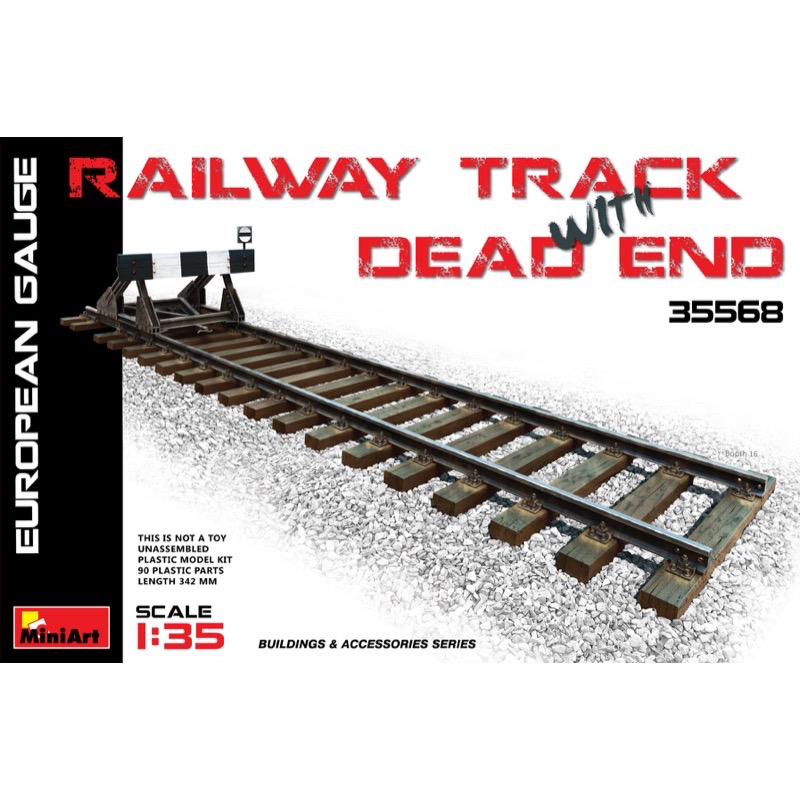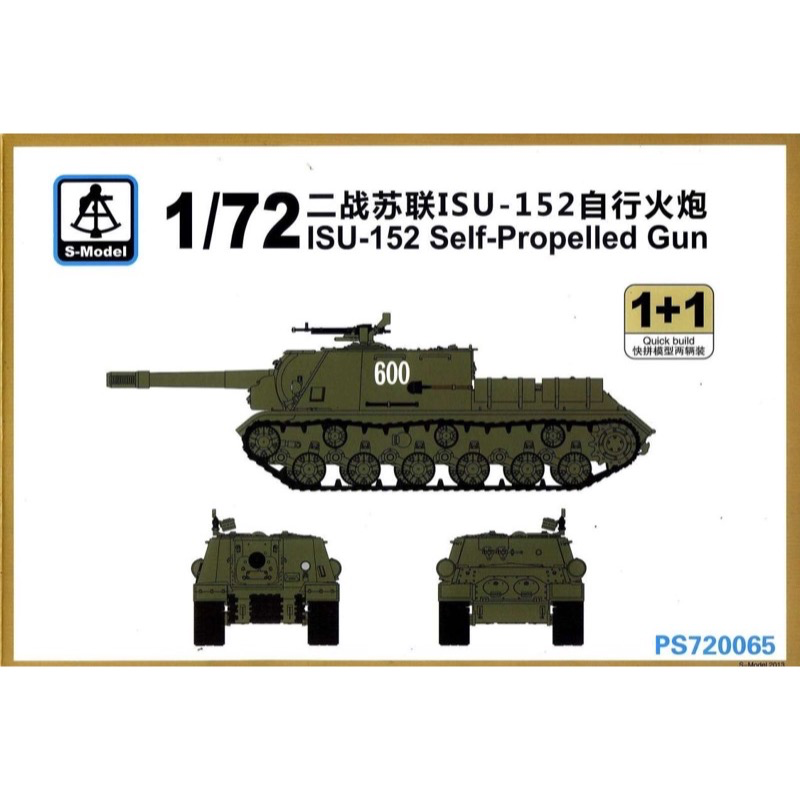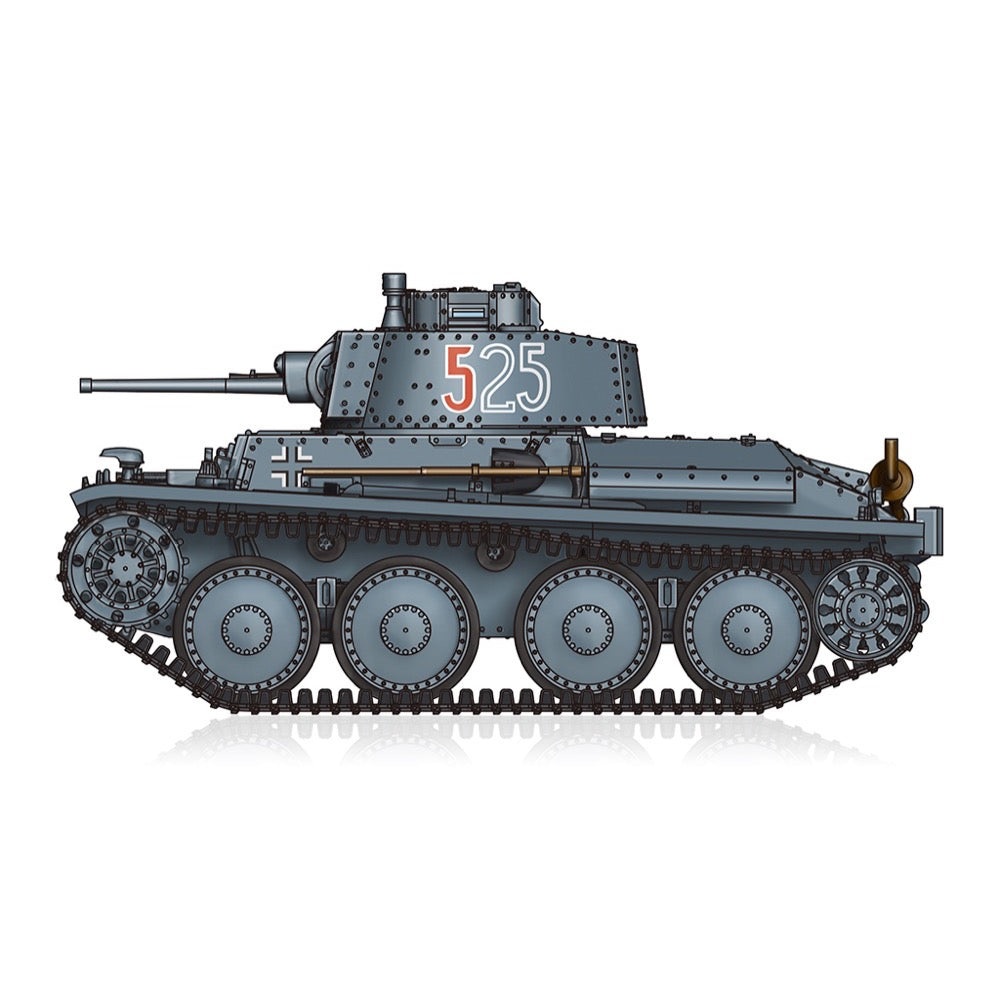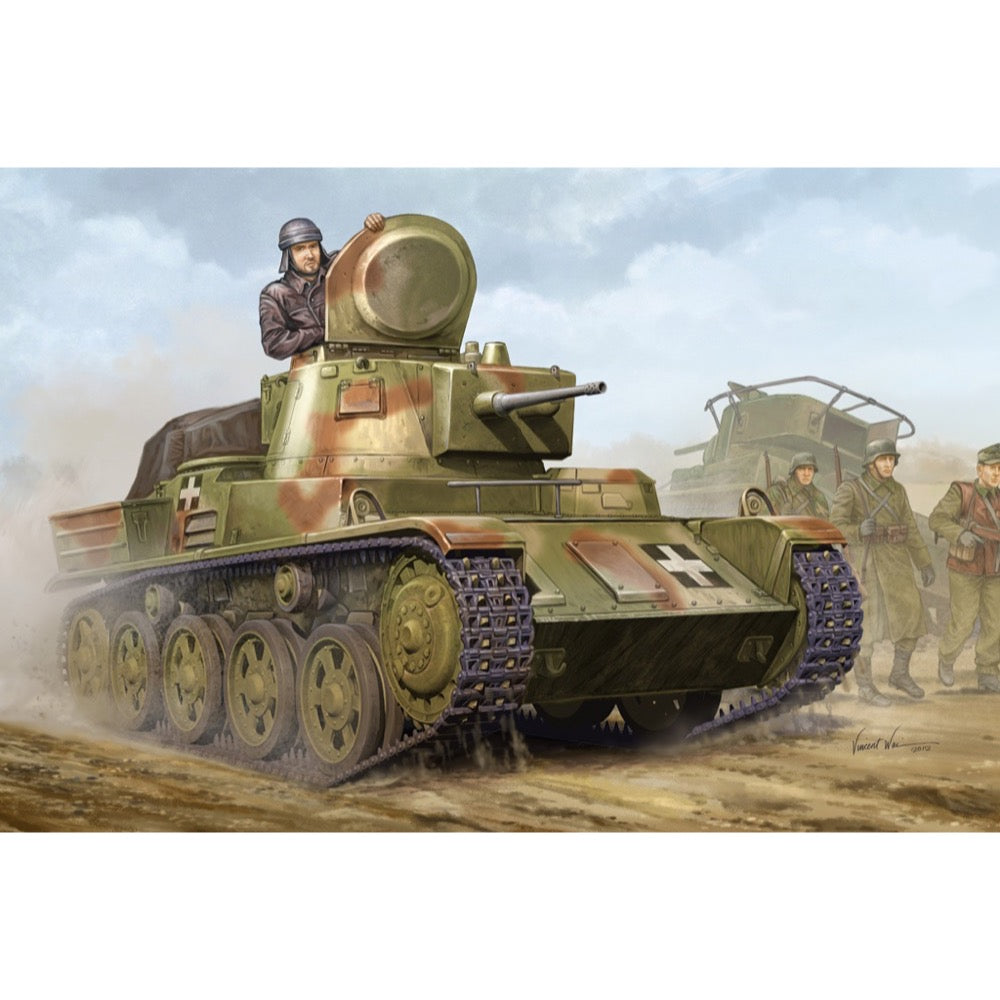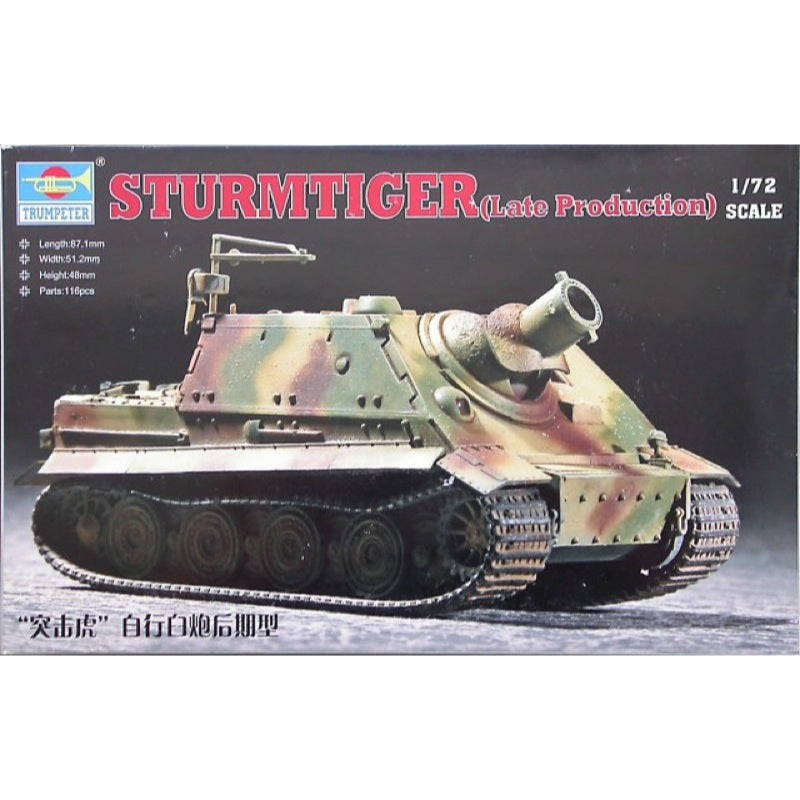
Trumpeter 07247 1/72 Sturmtiger
11.00
$
<p>The Sturmtiger based on the Tiger I was armed with a short-barreled 38cm Raketenwerfer 61 L/5.4, breech-loading rocket launcher/mortar. The RW 61 launcher fired short-range (4,600 to 6,000meters). Sturmtigers equipped three Panzer Sturm-M</p>
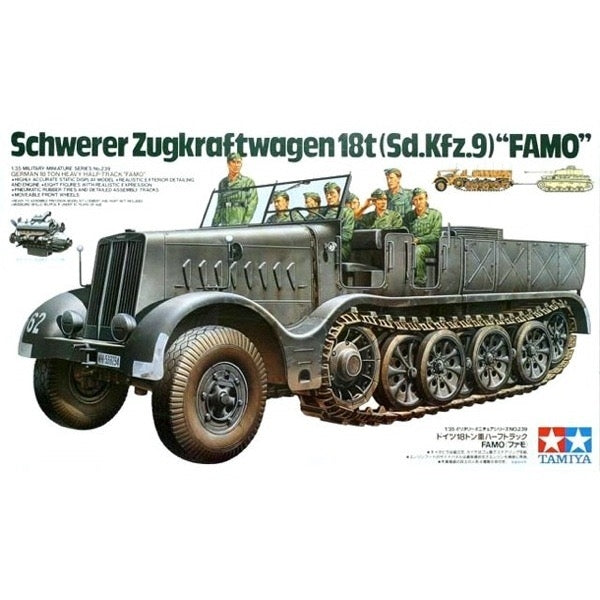
Tamiya 35239 1/35 German 18T Heavy Half Track
44.00
$
<h3>"Famo"</h3>
<p>When a tank became inoperative, the Recovery Platoons were informed of the condition of both the tank and the surrounding road surface. Tanks such as Pz.Kpfw.III and Pz.Kpfw.IV could be towed by a single 18 ton heavy half-track, but heavy tanks such as the Tiger I or Panther required three or more towing vehicles. In that case, about 5 meters of wire rope was used to link each of the half-tracks together. Except for emergency situations, a draw-bar was used for the tank/half-track linkage instead of wire rope. After the linkage was complete, a commander and signalman boarded the lead half-track, directing the other half-tracks by a series of hand signals.</p>
<h3>Largest Half-Track in the German Army</h3>
<p>Detailed information on the finished FAMO is presented one month after the initial report of the mock-up. The FAMO was the largest half-track in the German army, and the model reflects the size and detail of this behemoth. Combine with the Panzer III, IV, Tiger I and Panther for a variety of diorama possibilities.</p>
<h3>Did Somebody Call a Tow Truck?</h3>
<p>In the wake of Blitzkrieg advances made by the Wehrmacht at the outbreak of WWII, the recovery of damaged or broken tanks from the battlefield proved relatively simple. After securing an area, reinforcing divisions could easily send inoperative vehicles back to the homeland for repair via railway. However, in the seesaw battles with the British Army in North Africa and against the Russian Army on the Russian front, the quick replenishment of tank strength became an indispensable element of Wehrmacht battle strategy. The utilization of the 18 ton Heavy Half-Track “Famo” proved fundamental to this strategy.</p>
<p>The proposal for the development of the Wehrmacht half-tracks was first made in 1932. Originally, three half-tracks, designated by their towing capability (5 ton, 8 ton and 12 ton) were designed, until 1936, when a light 3 ton vehicle and a heavy 18 ton vehicle, the largest one in the Wehrmacht, were also added. The 18 ton half track was mainly developed for the towing of 21cm and 24cm artillery howitzer and of course for tank recovery. It could also be used for the transport of over 30 troops.</p>
<h3>Features</h3>
<ul>
<li>
<p>1/35 plastic assembly kit of the largest half-track in the German Army.</p>
</li>
<li>
<p>Overall Length: 243mm, Overall Width: 75mm.</p>
</li>
<li>
<p>Highly detailed model captures the size and tank-towing power of the FAMO.</p>
</li>
<li>
<p>Realistic treads and suspension.</p>
</li>
<li>
<p>Synthetic rubber front tires and steerable front wheels for maximum realism.</p>
</li>
<li>
<p>Rear gate and storage doors can be assembled in the open or closed position.</p>
</li>
<li>
<p>Tank towing drawbar included.</p>
</li>
<li>
<p>Can be assembled with or without engine side panels, revealing fully detailed engine.</p>
</li>
<li>
<p>Engine can be assembled outside of FAMO.</p>
</li>
<li>
<p>Eight figures (four variations) included.</p>
</li>
</ul>
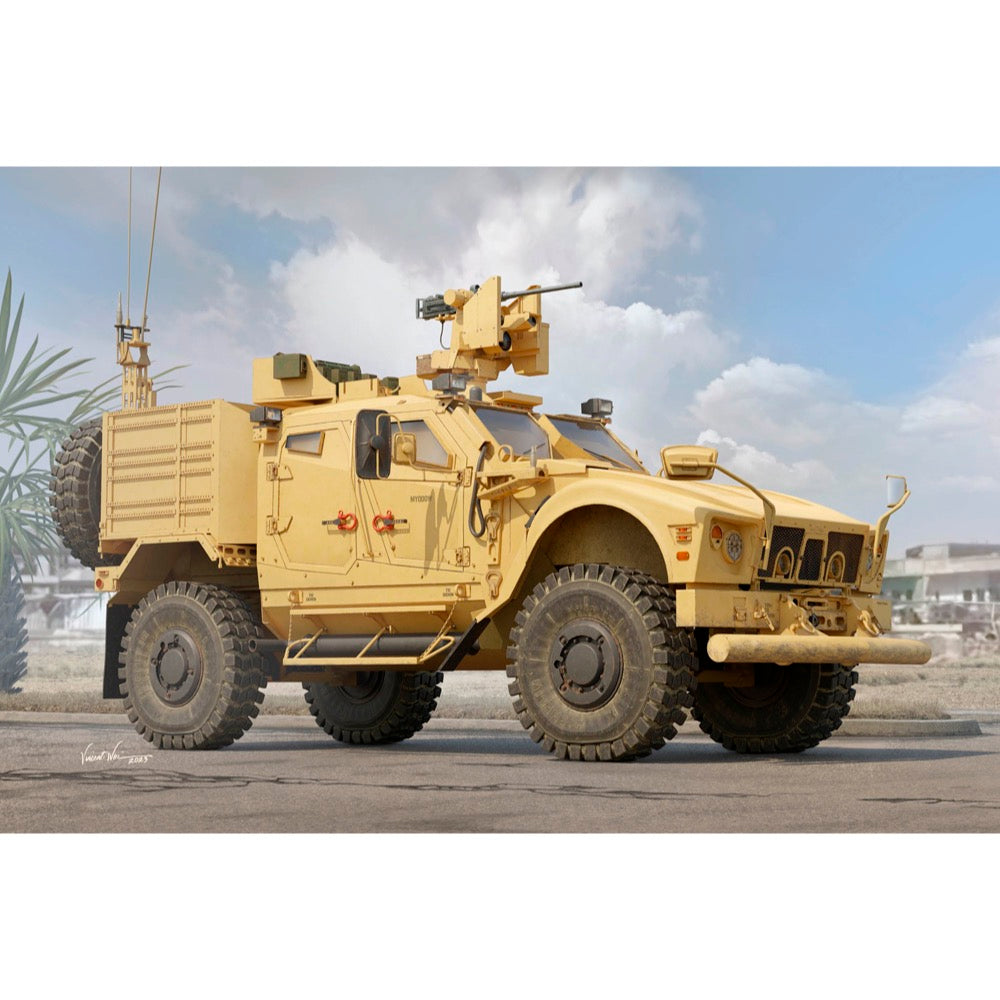
I Love Kit 63554 1/35 US SOCOM M1245A1 M-ATV
37.00
$
<h3>US Special Forces M1245A1 Mine-Resistant All-Terrain Vehicle.</h3>
<p>Upgraded variant of the Mine-Resistant Ambush Protected All-Terrain Vehicle (M-ATV) designed for U.S. Special Operations Command (SOCOM). Built by Oshkosh Defense, this highly durable, 4x4 tactical vehicle offers protection against mines and IEDs while being agile enough for rugged terrain. The M1245A1 features advanced armour, off-road capability with modifications to support special operations missions, including enhanced mobility and payload capacity.</p>
<h3>Features</h3>
<ul>
<li>Detailed multi-directional slide-molded cab.</li>
<li>Full drive train assembly complete with engine transmission, differential housing and suspension units.</li>
<li>The main tires are hollow rubber with very good tread pattern</li>
<li>Wheel hubs are in great det</li>
</ul>
<h3>Specifications</h3>
<ul>
<li>13 sprues, cab and tyres. <br>
</li>
<li>Photo-etch parts included<br>
</li>
<li>L: 194 mm, W: 93 mm<br>
</li>
<li>Total parts 630+.<br>
</li>
<li>1:35 scale plastic model kit from I Love Kit<br>
</li>
<li>Requires paint and glue.</li>
</ul>
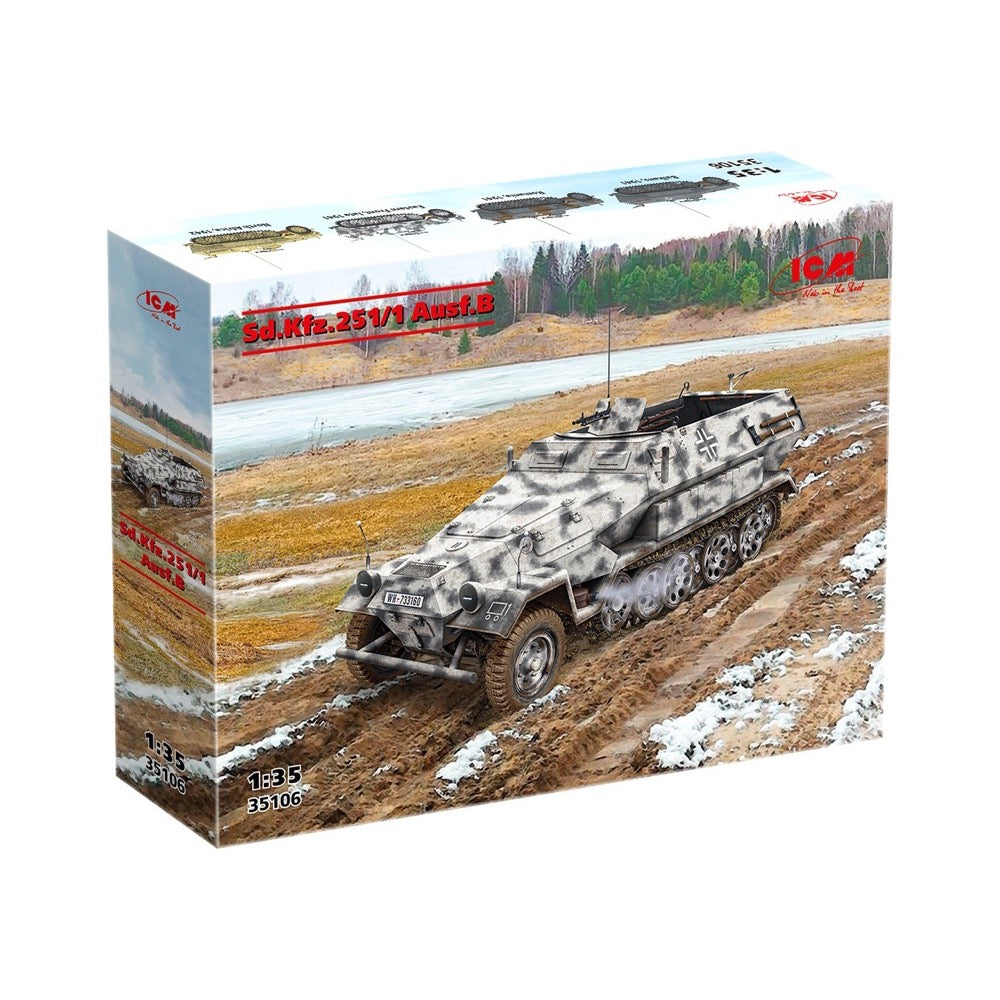
ICM 35106 1/35 Sd.Kfz.251/1 Ausf.B
39.00
$
<p>The Sd.Kfz.251 half-track armored personnel carrier was the primary armored transport vehicle of the German Wehrmacht. It was developed by the company Hanomag in 1938, based on the artillery tractor Sd.Kfz.11, with serial production starting in the summer of the following year. The Sd.Kfz.251 armored personnel carriers were produced in four main variants—Ausf.A, B, C, and D—and there were 23 different versions for various army needs, differentiated by their armament and equipment. The 251/1 variant was the standard transport vehicle for the German motorized infantry, capable of carrying one squad of soldiers. These combat vehicles were in service with the German Army throughout World War II and were used on all theaters of combat, with a total of 15,252 units produced in various series and modifications. Among other armored personnel carriers produced during World War II, they were second only to the American M3 in terms of quantity.</p>
<p>The Sd.Kfz.251 Ausf.B was the second variant in the line of these armored personnel carriers, with production beginning in the second half of 1939. Several changes were made to the vehicle’s design, mostly related to technological improvements, with the primary modification being the removal of observation slits on the side walls. Production of the Sd.Kfz.251 Ausf.B continued until the end of 1940. Notable operations in which they participated include the occupation of the Balkans, Operation Barbarossa, and combat operations in North Africa.</p>
<h3>Specifications</h3>
<ul>
<li>Model size (length x height): 167 x 105 mm<br>
</li>
<li>Box size: 294 x 230 x 58 mm<br>
</li>
<li>Number of details: 290</li>
</ul>
<h3>Markings</h3>
<ul>
<li>Sd.Kfz.251/1 Ausf.B, 9th Panzer Division (9. Pz.D.), Balkans, 1941<br>
</li>
<li>Sd.Kfz.251/1 Ausf.B, 5th Panzer Division (5. Pz.D.), Romania, 1941<br>
</li>
<li>Sd.Kfz.251/1 Ausf.B, Eastern Front, late 1941</li>
</ul>
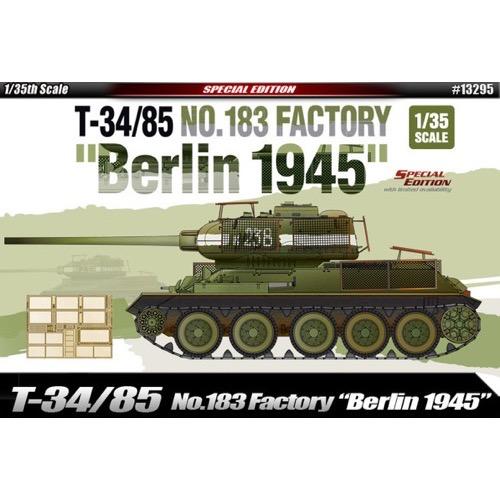
Academy 13295 1/35 T-34/85 No.183 Factory Berlin 1945
37.00
$
<p>The first prototypes were built in 1937-1940, and serial production in the USSR was carried out in 1940-1957. About 84,000 vehicles of this type were built in its course, which makes the T-34 one of the most produced tanks in history! The drive was provided by a single engine V-2-34 with a power of 500 hp. The length of the car - in the T34 / 76 version - was 6.68 m, with a width of 3 meters. The armament consisted of a 76.2 mm F-34 gun and two 7.62 mm DT machineguns. The main armament in the T-34/85 version was the 85mm ZIS-S-53 gun.</p>
<p>The T-34 is undoubtedly one of the most famous tanks in the history of both World War II and military in general, representing a specific symbol of Soviet victory in the war with the Third Reich. The vehicle was developed for the needs of the Red Army as a successor to the so-called pursuit tanks from the BT series (BT-5 and BT-7), but also the T-26 tank. Work on the car started in 1937 in a special design office at the Steam Engine Factory in Kharkiv. Initially, the works were managed by Eng. Adolf Dik (he also made the first sketches of the new car), and after his arrest by the Soviet security authorities, Mikhail Koszkin managed the work. Initially, the vehicle was designated as A-20. However, a second prototype (A-32) was quickly built, with a main armament in the form of a 76.2 mm cannon and much thicker frontal armor. It was the latter prototype that was finally adopted for production. It can be assumed that when it was introduced into service, the TT-34 was a very successful tank in many respects. It was characterized - as in 1940 - with a very strong weapon, it had a well-profiled armor based on sloped armor plates, as well as very high mobility and off-road driving properties. The disadvantages include the very poor ergonomics of the car or the poor optics used in the first production batches. Despite these shortcomings, when the T-34 appeared on the Eastern Front, German troops were greatly surprised by it. The high overall rating of the T-34 and its combat values determined its mass production and making it the basic tank of the Red Army during the fights in 1942-1945. They also resulted in further improvements to the structure, e.g. in 1942 a new hexagonal tower appeared, improving the quality of work of crew members with the commander's cupola. The engine and gearbox were also improved. However, in 1944, the T-34/85 model was introduced into service, with a completely new three-man turret and the main armament in the form of an 85 mm cannon. The T-34 tank fought in virtually all major battles fought between the Red Army and the Wehrmacht on the Eastern Front in 1941-1945: starting at the Battle of Moscow, through the battles of Stalingrad and Kursk, Operation Bagration, and the capture of Berlin. After 1945, the T-34 tank was still in service, it was also widely exported outside the USSR to countries such as Czechoslovakia, Poland, East Germany, Hungary and Syria.</p>
<p>The T-34/85 played an active part in the later part of World War II. This precision-molded model kit represents a locally modified version of this tank, with a welded net, used during the Battle of Berlin. Decals and photo-etched parts are included.</p>
<p>This is an injection-plastic military vehicle model kit.</p>
<h3>Features</h3>
<ul>
<li>Includes: Decals, photo-etched parts</li>
<li>Size: Approximately 23cm long, 7.8cm high when completed</li>
</ul>


